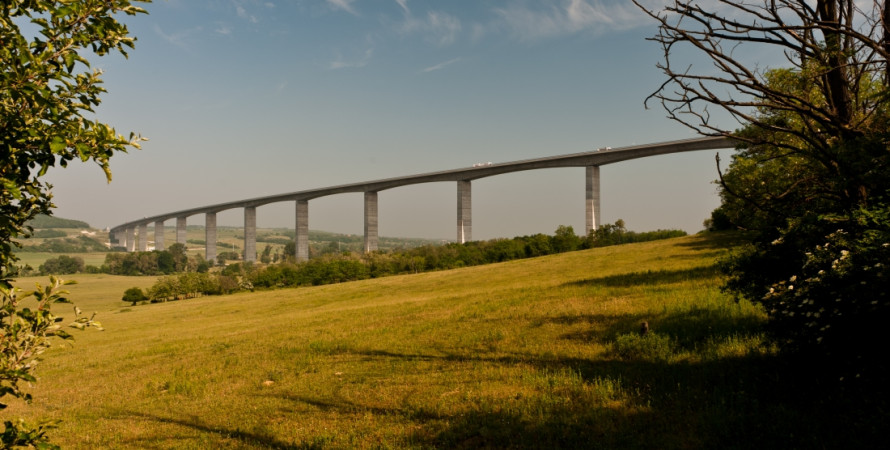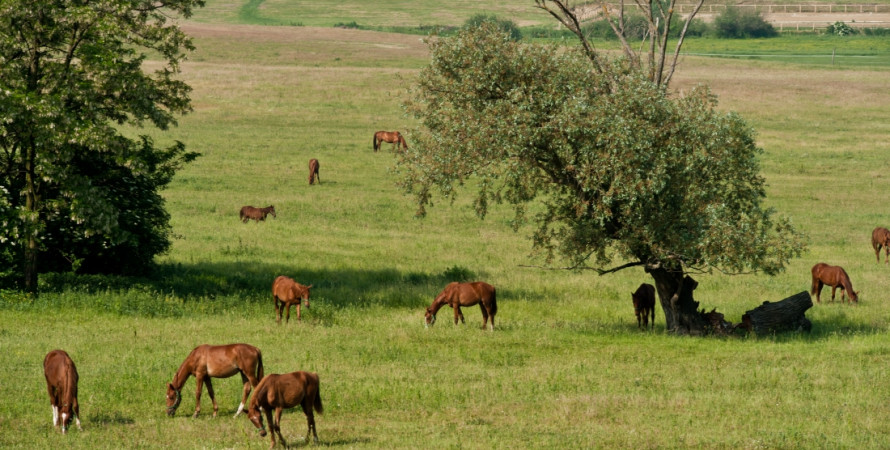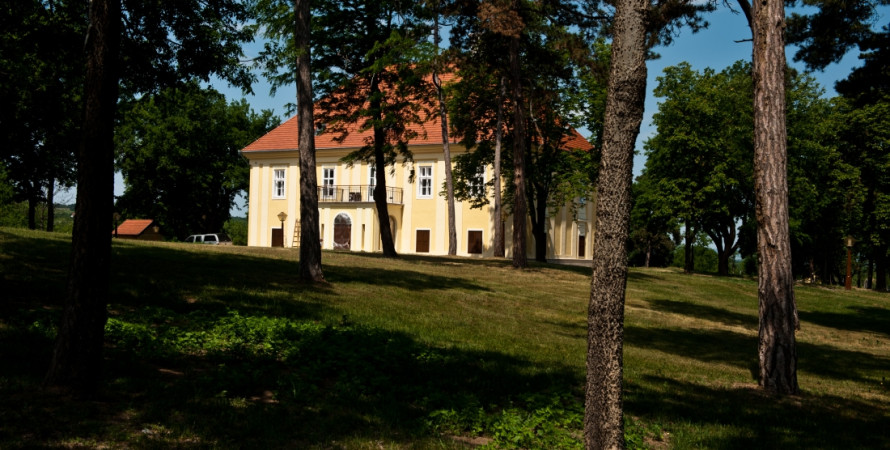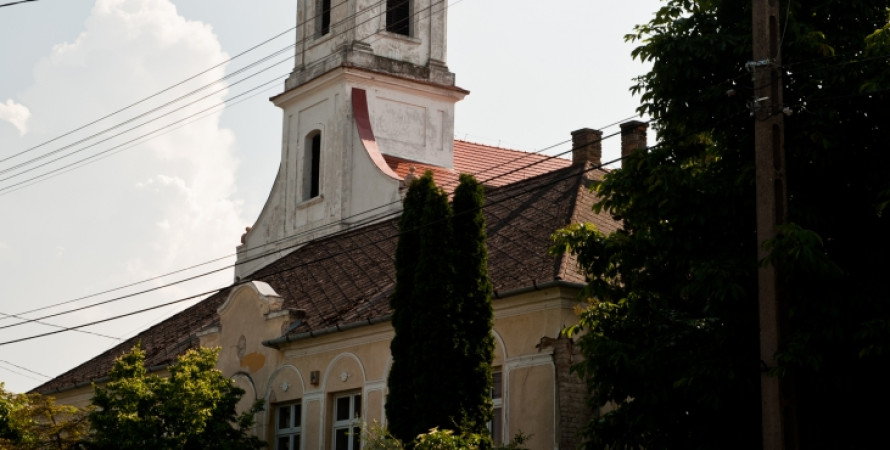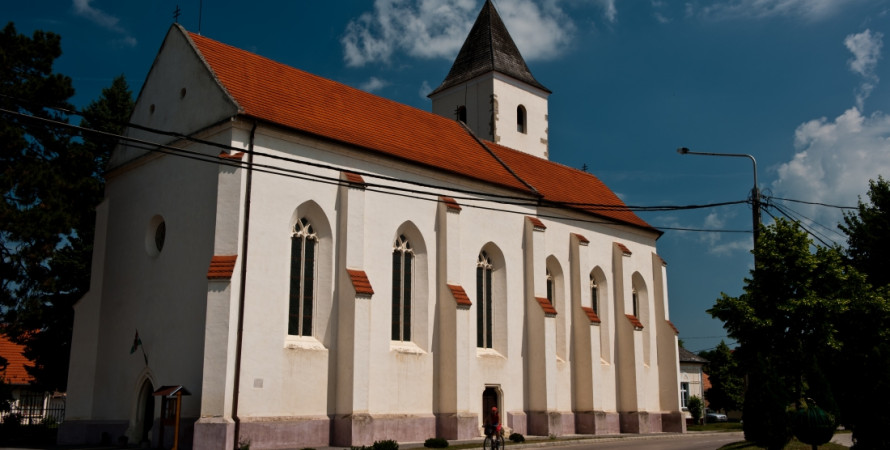A Balaton déli partjától 3 km-re, egy völgyben fekszik. Mára összeépült Balatonföldvárral a község nyugati végén, míg észak felé Szántód 1 km-re terül el a falu határától.
Kőröshegy és környéke a Somogy megyei dombvidékhez tartozik, közelebbről a Külső-Somogyi dombság egyik völgye a Kőröshegyi-völgy.
Régészeti leletek tanúsítják, hogy e vidék már az őskortól lakott volt. Első okleveles említése 1082-ből származik, melyben I. (Szent) László a veszprémi káptalan birtokai közé sorolta, még a tihanyi apátság alapító levele a pannonhalmi apátság Szent Benedek-rend birtokai közé sorolta.
IV. Béla idejében, Albeus mester összeírta a jobbágyokat, így név szerint is ismertek a község akkori jobbágyai. 1376-ban a pannonhalmi rend somogyi jószágkormányzóságának székhelye volt.
Kőröshegy a középkor végén mezőváros volt. 1532-ben a török megjelenése előtt még 12 ferences élt a 2000 négyzetméteres kolostorban. (Romjai az általános iskola udvarában vannak.) A török alatt a ferencesek elhagyták itteni kolostorukat, a templom megrongálódott, és hol török iskolaként, hol istállóként működött.
A török kiűzése után a 17. századtól a Széchényiek birtoka lett. A Széchenyieknek jelentős szerep jutott a török dúlta falu újjáépítésében.
1862-ben óriási tűzvész pusztított a faluban, melyben leégett 43 ház, a református templomtorony, paplak és tanítói lakás. Nyolc év alatt azonban mindent újjáépítettek.
A Római katolikus templomot gótikus stílusban építette Báthory István országbíró a XV. században második felében. A templom teljes hossza kívülről 33,7 m. A templom nyugati kapuja fölött kerek ablak az úgynevezett rózsaablak vagy Szent Katalin kereke található. Kívülről, a templom déli oldalán öt, a délnyugati és a délkeleti sarkán egy-egy, az apsis három oldalánál is egy-egy támpillér helyezkedik el. A templom déli oldalán, a támasztópillérek között hat gótikus ablak található. A templomot többször is renoválták, (1906, 1969-1970) legutóbb 2002-ben.
A XVII. század elején épült Református templomot a törökök lerombolták és felégették mikor elhagyták a falut. A ma is fennálló templomot 1813 tavaszán kezdték építeni, 1818 augusztusában készült el. Legutóbb 2004-ben renoválták.
A Széchényi-kastélyt Széchényi György, a pölöskei és egervári végházak főkapitánya építtette 1680 körül. Erre az épületre vagy ennek helyére épült a jelenlegi késői barokk kastély 1780 körül. Leghíresebb lakója a vadász-író Széchényi Zsigmond 1923-tól, nyolc éven keresztül, 1931 őszéig lakott a kastélyban. Itt született meg első máig is nagy sikerű műve – első vadászexpedíciójának élményéből – a Csui. (1930) Kőröshegyről az Ünnepnapok című művében ír. Jelenleg magánkézben van, nem látogatható.
Népi parasztházai a Petőfi Sándor utca 65. szám alatt (épült: 1869), Petőfi Sándor utca 92. szám alatt, (épült: 1850 körül) és a Kossuth Lajos utcában 86. szám alatt láthatóak. A fehérre meszelt, oromfalas, nádtetős parasztházak legattraktívabb része a az oszlopos, boltíves tornác.
A Borkút utca végén található Dézsma pincét már a középkor óta használták bortárolásra. Jelenleg magánkézben van, nem látogatható.
Napjainkban szőlőjéről, boráról nevezetes község.
Honlap: http://www.koroshegy.hu

